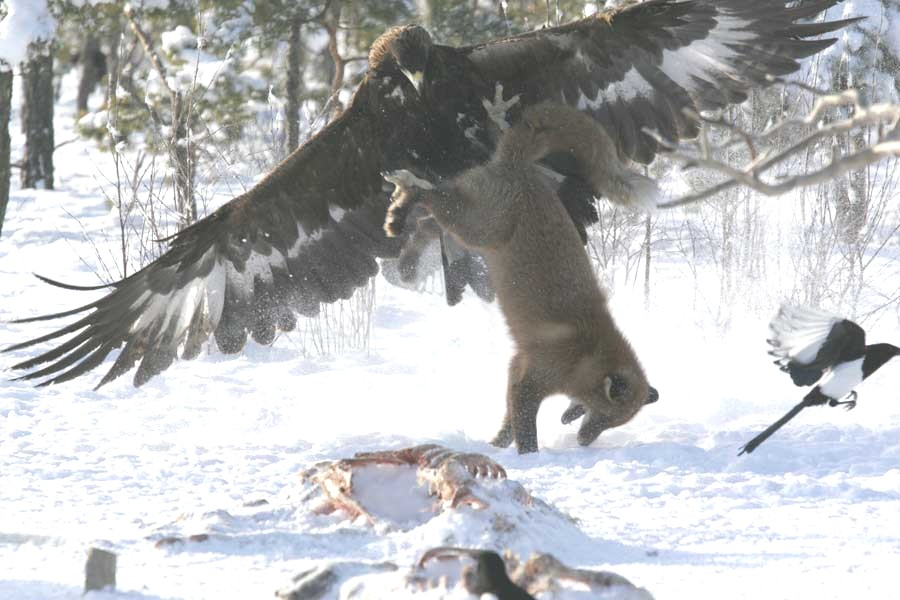Habitat
The Golden Eagle’s habitat is one that is hard to define,
since they occupy such a large area and some have been known to
migrate with prey. Migration for these animals is
rare and only in areas where prey is scarce. They can be found
 across the Northern United States, Europe, Asia, and North
African countries in Alpine and pre Alpine regions. Click
here for a distribution map. Select
groups in especially cold climates like the Mongolian Mountain
ranges. Specifically, these Eagles prefer to nest in the Alpine
region (Pedrini & Sergio, 2002). This is because of the
protection the Alpine region offers the Eagles’ nests, which
they build in large trees or the rocky cliff sides. By
building nests just above the tree line in Alpine areas these
Eagles know when something is approaching long before it can get
close. This gives the eagle time to react, whether it is prey or
predator. This perch not only allows for protection but
for scouting prey, sitting far above where it would be nearly
impossible to detect.
across the Northern United States, Europe, Asia, and North
African countries in Alpine and pre Alpine regions. Click
here for a distribution map. Select
groups in especially cold climates like the Mongolian Mountain
ranges. Specifically, these Eagles prefer to nest in the Alpine
region (Pedrini & Sergio, 2002). This is because of the
protection the Alpine region offers the Eagles’ nests, which
they build in large trees or the rocky cliff sides. By
building nests just above the tree line in Alpine areas these
Eagles know when something is approaching long before it can get
close. This gives the eagle time to react, whether it is prey or
predator. This perch not only allows for protection but
for scouting prey, sitting far above where it would be nearly
impossible to detect.
According to Pedrini and Sergio “[The Alpine] provides higher
prey availability and habitat sustainability resulting in higher
breeding success”. The denser the prey is in an Eagle’s
territory, the more offspring they successfully raise. In
the pre Alpine, Aquila chrysaetos prefer to occupy space that is
far away from the effects of human development, and is open or
slightly wooded (Pedrini & Sergio, 2010). Golden Eagles need
large plots of hunting ground that does not cross into another
Eagles territory.
The open or slightly wooded landscape allows for the Golden
Eagles to use their well-suited adaptions to locate and attack
prey, and these lightly wooded conditions are usually where most
common eagle prey resides. The open terrain also leaves few
places for prey to hide or escape the ruthless diving attacks
and strength of Aquila chrsaetos. Click
here to see adaptations. European
farmland has recently been deserted, which has lead to the
spread of woodland forest territory and the decline of Golden
Eagle hunting ground (Pedrini & Sergio, 2013). For more
information on habitat loss see
interactions.
Return to Aquila chrysaetos homepage.